Rags to Riches to Ruin: 200 Years of Hartera, Croatia’s Iconic Paper Factory
Did you know that the first steam engine in the Balkans was installed at a paper factory in Croatia? Or that the same manufacturing plant produced 7% of all cigarette paper in the world? It’s been 200 years since the foundation of the Rijeka Paper Mill, which grew into an industrial giant of international renown only to meet its demise in the early 2000s. A look at the legendary Hartera on November 29th, 2021
Better known by its nickname Hartera, the Rijeka Paper Mill used to be one of the focal points in the city renowned for its (former) industrial glory. Founded by a local industrialist in 1821 and further expanded by foreign investors, the factory grew into a wildly successful business over time. Hartera provided jobs to thousands of workers, its paper products were exported worldwide, and won medal after medal at international expos.
Alas, much like the majority of industry in Rijeka (and the rest of the country), the Paper Mill fell victim to the economic turmoil that followed after the war in the 90s. The factory ceased operating and the insolvency proceedings drew to a close in 2005.
This year marks the 200th anniversary of Hartera’s foundation, and the City Museum of Rijeka marked the occasion with an exhibition dedicated to the Paper Mill, its history and its workers. Named Hartera bez harte (paper mill without paper), the exhibition inspired this article as an homage to the legendary factory and its illustrious past.
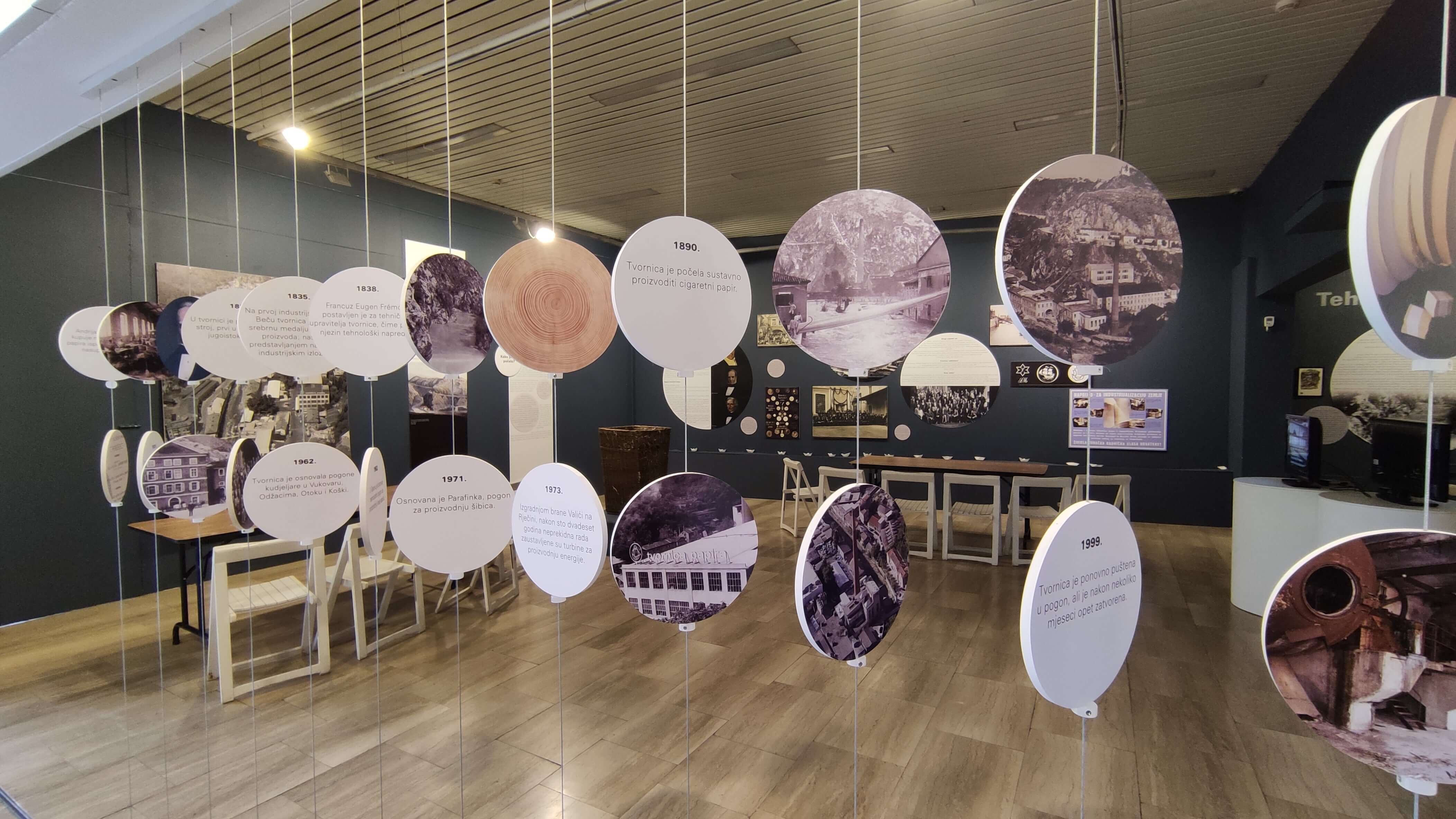
Exhibition Hartera bez harte at the City Museum of Rijeka
The story of Hartera begins with rags.
Humble rags once used to be highly coveted goods: paper was predominantly manufactured from cloth fibers until 1886 when cellulose replaced fabric as the main substance used in paper production.
Rag trade thus became quite a prolific commercial activity in these parts. Peddlers called cunjari visited small villages and went from door to door, collecting used linen and hemp cloth which they later resold to bigger buyers. Rags were in demand worldwide, and so tonnes of old cloth sourced in all parts of Croatia got exported to Trieste, London, Liverpool and New York via the harbour in Rijeka.
Andrija Ljudevit Adamich, a trader, industrialist and one of Rijeka’s best known historical figures saw an opportunity in the booming rag trade. He purchased a mill on the river Rječina in 1821, repurposing the existing facilities into a paper mill which soon employed 21 workers.
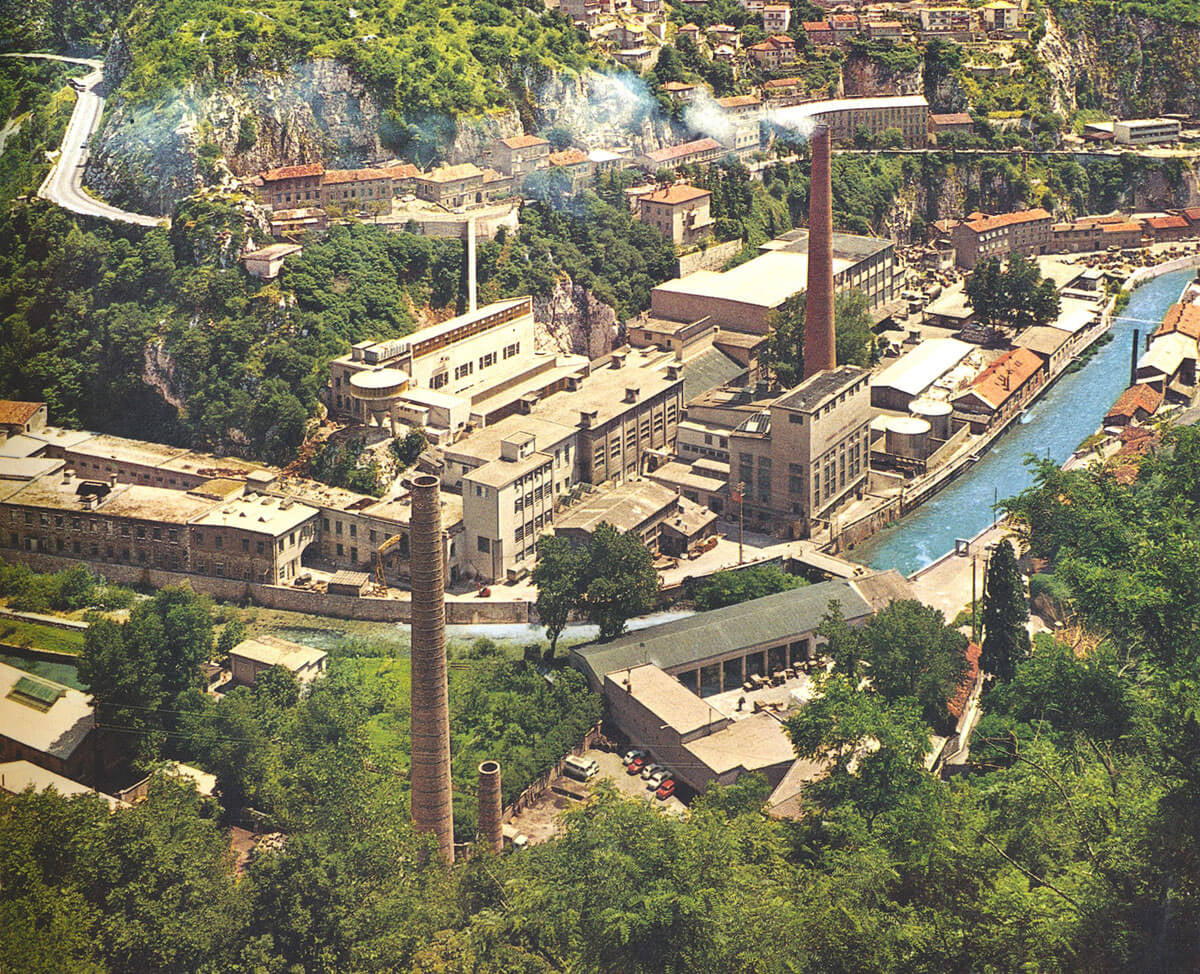
The Rijeka Paper Mill in the 20th century / Nova riječka enciklopedija - Fluminensia
The business turned out to be more of a headache than a success for Adamich. It was a time of general economic hardship, and manufacturing was made more difficult due to high production costs and procurement issues. A few years later the company was sold to foreign investors, namely Charles Meynier and Walter Crafton Smith who turned the struggling business into one of Rijeka’s industrial giants. They expanded and modernised the manufacturing plant and promptly installed a Foudrinier, the best paper making machine available at the time. Oh, and…
The first steam engine in the Balkans
Business picked up quickly after Meynier and Smith took over, and it wasn’t long until the factory employed 250 people to meet the production demand. As the output increased, manufacturing required more power, leading the owners to obtain a steam engine for the factory in 1833 - the first one in the Balkans.
It didn’t take long for Hartera paper to start amassing accolades at major industrial expos. It won a silver medal at the First industrial exhibition in Vienna in 1835, followed by awards won in Paris, Munich, London, Barcelona and Melbourne.
Interestingly enough, the company only launched its products domestically in 1878. For the first 50 or so years of operation, paper products made in Hartera were only sold on foreign markets: Italy, England, USA, Brasil, East India, and the eastern Mediterranean from Greece and Turkey to Jordan and Egypt.
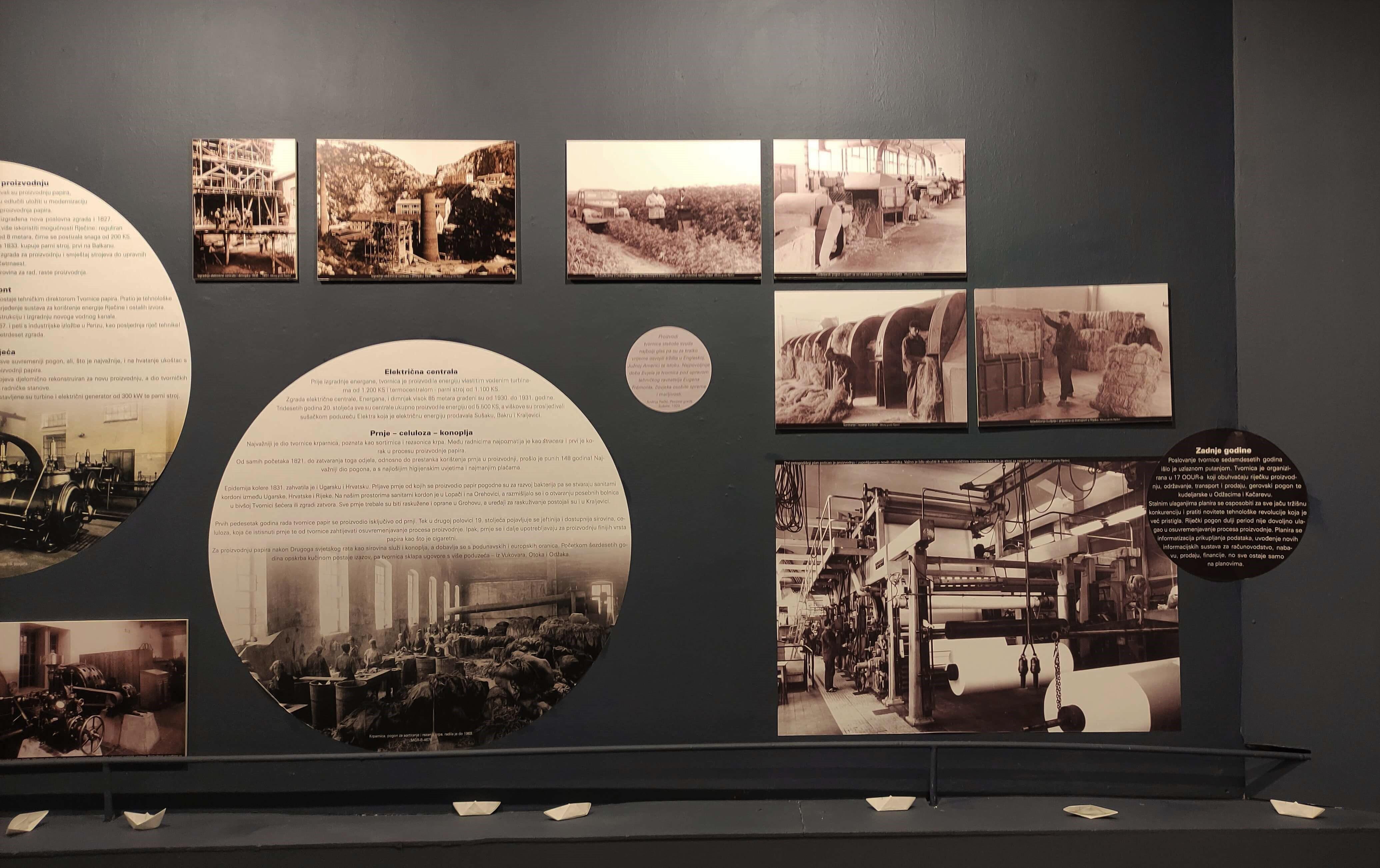
Poor working conditions
While the factory might have had the best manufacturing equipment money could buy at the time, and operated with such success that its workforce expanded significantly with each passing year, working conditions were far from ideal.
At the end of the 19th century, the company employed some 600 people; the factory operated around the clock, with everyone working 12 hour shifts with a single one hour break. No workwear or protective gear was provided to employees, leading to frequent injuries on the floor.
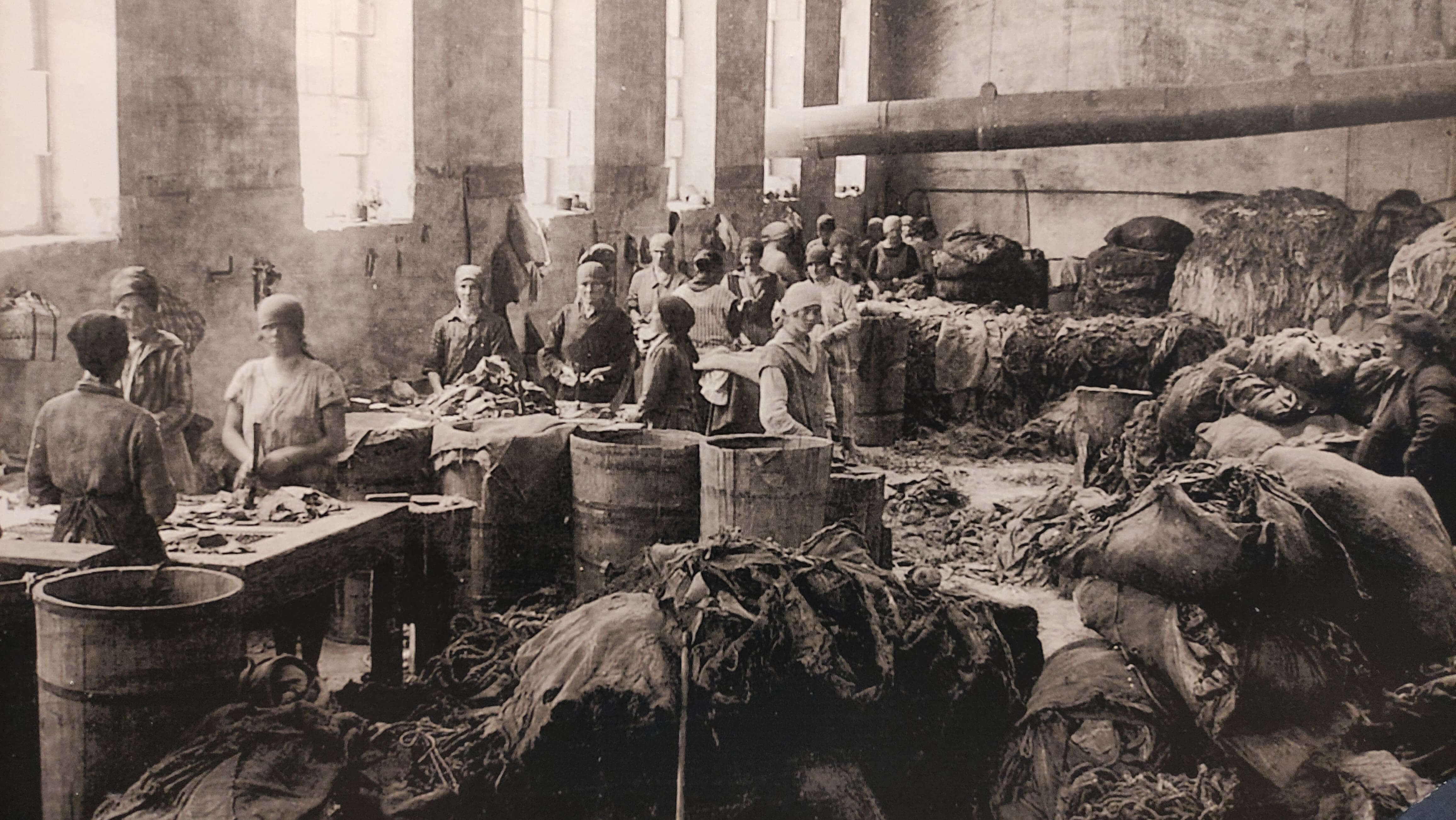
Workers at the rag sorting hall
Hygiene standards weren’t a thing either, the rag sorting facility being the worst offender in this regard. The workers had to sort through mounds of dirty used fabric riddled with bacteria (again, without any protective gear), leading to a slew of infectious diseases.
Considering that some diseases were not yet studied or had no known cure at the time, they were often referred to by alternate names. Anthrax was widely known as the woolsorter’s disease, or in Hartera’s case, cunjavica - the ragpicking disease. In the late 1880s, a particularly severe outbreak of anthrax resulted in the tragic death of 22 women workers.
On labour rights
Fed up with the poor working conditions, workers from several factories in Rijeka got together in 1906 and staged a mass strike. All 600 of Hartera’s workers joined the strike with a few demands: they called for shorter shifts, a day off on Sundays, and a 20% raise. Additionally, they asked for an employee board to be established, composed of eight workers who would serve as intermediaries between the company owners and the rest of the workforce.
The management responded by firing them all.
Things started to look up in the following few decades, though. Several syndicates negotiated with the management, leading to a collective agreement in 1938 which saw quite a few improvements to the working conditions at the paper mill. Employees were to work eight hour shifts, six days a week, and get paid every Saturday. Men earned 5 dinars per hour, whereas women got 4,5. After two years of employment, all workers earned a right to six vacation days a year. The company was also finally required to provide protective workwear and washing facilities with cold and hot water.
Why ‘Hartera’?
The Rijeka Paper Mill was officially named Tvornica papira (paper factory), but the enterprise has more often been referred to as Hartera to this day. Where does the nickname come from?
The Croatian word for paper is papir, but is called harta in the local dialect - which soon resulted in hartera, a logical name for a place where harta was made.
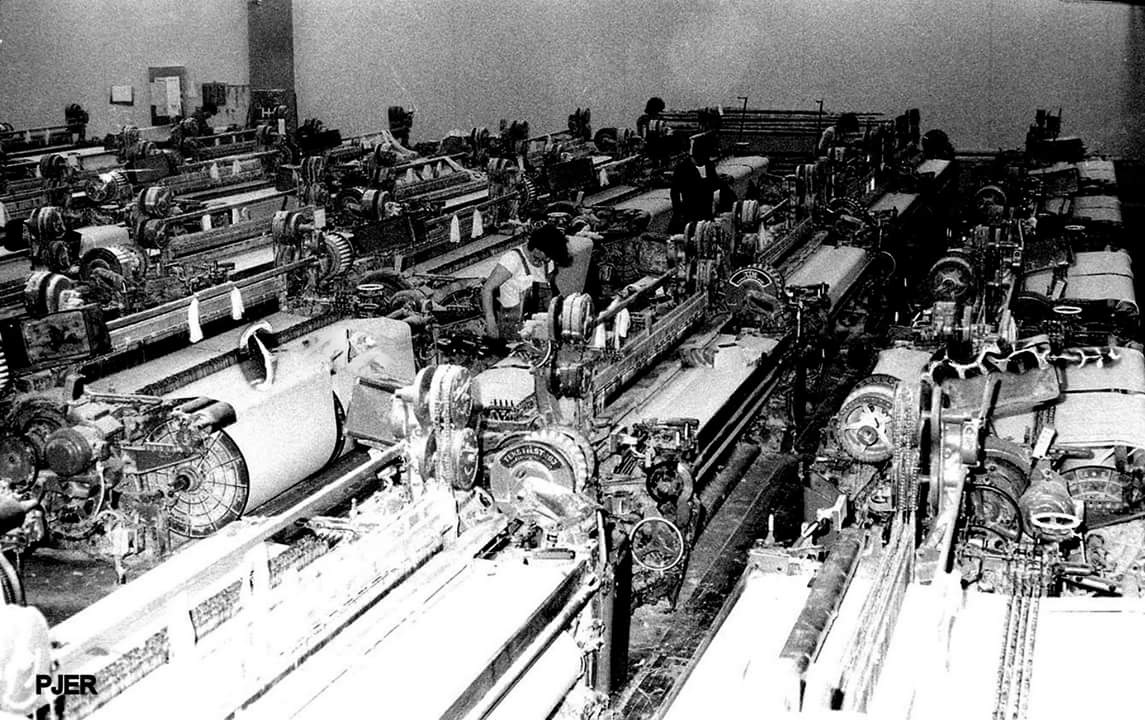
Pero Lovrović Pjer / Nova riječka enciklopedija - Fluminensia
Paper production
A wide range of products was manufactured in Hartera ever since the factory first started operating, mostly various types of writing and packaging paper.

Cigarette paper was first made at the factory towards the end of the 19th century, and over time became one of the company’s most popular products. Quality was of utmost importance, and the factory even procured a tobacco blend called harman to test the rolling paper on the particular blend it was made for.
In the 1980s, Hartera accounted for 7% of global cigarette paper production.
4 billion matches a year
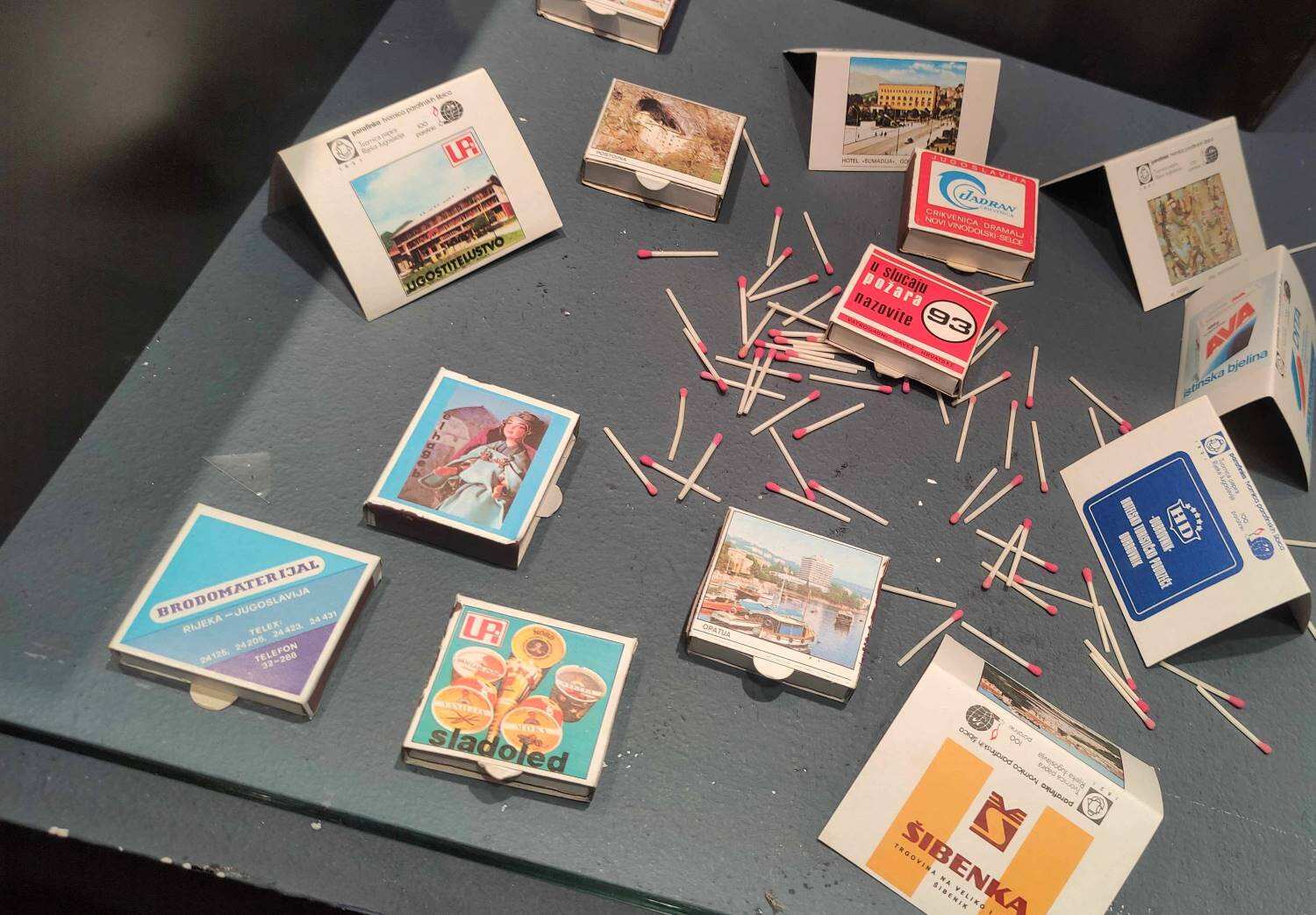
In 1971, one part of the Hartera plant was repurposed into a match factory named Parafinka. It was the only paraffin match factory in former Yugoslavia and became immensely successful within a decade: a report from 1981 shows that Parafinka produced around 48 million matchboxes that year, each box containing 80 matches. That’s close to 4 billion matches! If the figure is hard to grasp, let’s put it this way: if you were to arrange all those matches in a single line, it would circle the Earth three times.
Matches were made of Hartera’s thin, tightly rolled paper and then dipped in paraffin, resulting in a product which was thinner and shorter than wooden matches. The packaging was quite attractive, with colourful prints announcing major events and manifestations, advertising businesses, or promoting the region’s natural beauty and cultural heritage.
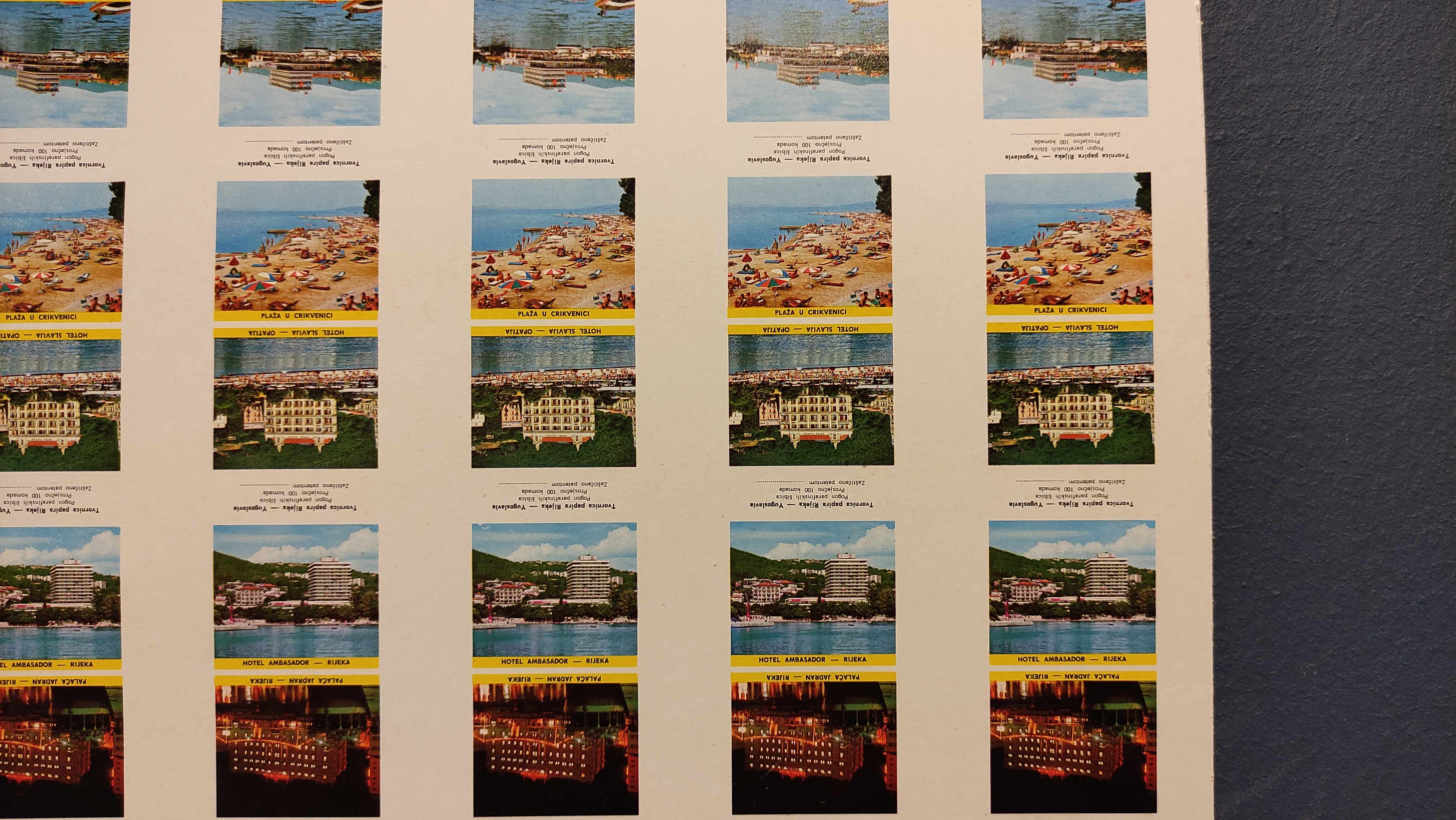
Parafinka matches were exported worldwide, including Libya, Egypt, USSR, Hong Kong, Austria, Switzerland, Belgium and the Netherlands.
Crises, disasters and the final blow
In almost two centuries of operation, the paper mill faced economic crises, wars, and a few natural disasters. The river Rječina was the main source of power for the factory, but also a destructive force. One severe flood damaged the plant in 1852, and the entire mill had to close down for several months after another disastrous flood in 1898. Flooding wasn’t the only threat: various parts of the plant burned down on four occasions at the turn of the 20th century.
Hartera survived all the hardships and - save for a few hiccups - continued to thrive until the war. In 1991, the company was at the height of its power: it employed over a thousand people and was the second biggest paper manufacturer in Europe.
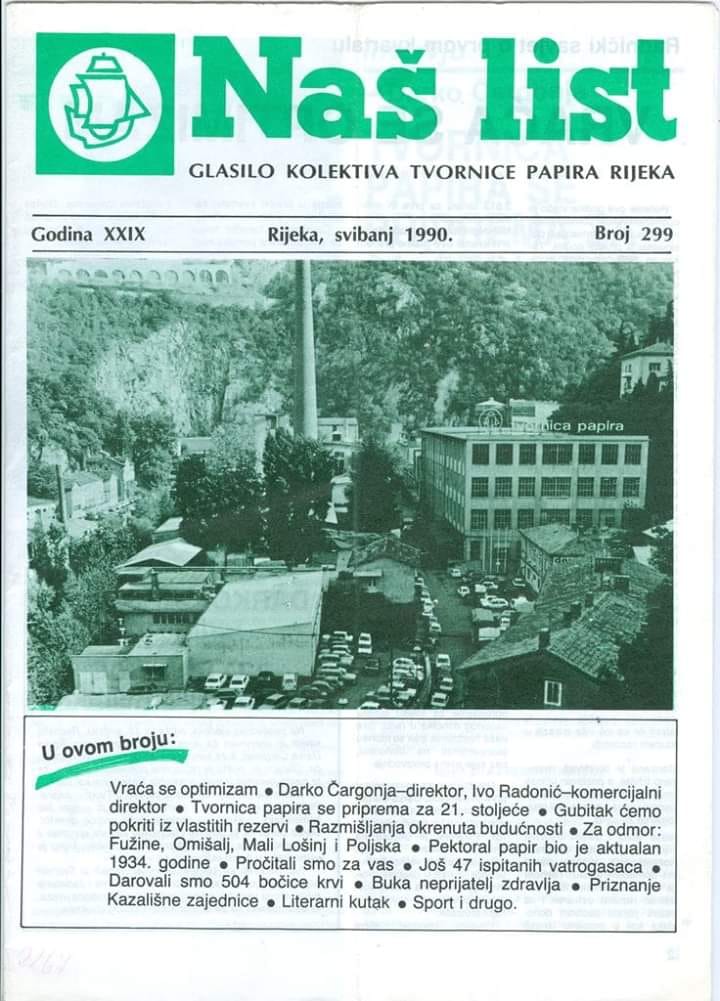
Rijeka Paper Mill bulletin from 1990 / Nova riječka enciklopedija - Fluminensia
Unfortunately, the war times and the economic turmoil that followed turned out to be the only hardship Hartera couldn’t survive. Substantial losses led to the factory closing down and the company declaring insolvency in 2005.
Uncertain future
After the paper mill ceased operating, the factory turned into a unique venue for a music festival. Named after the location, the Hartera Music Festival took place in the derelict factory halls until 2016, when the ruinous objects were declared unsafe and the festival moved to another location.
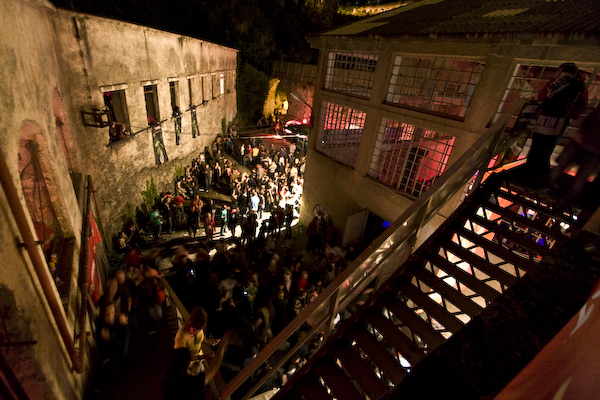
Hartera Music Festival in 2008. Source: Tim Ertl / Flickr
The Hartera festival was part of an initiative aiming to revitalize the area and preserve an important part of Rijeka’s industrial heritage. The City initially expressed interest, but the plans fell through due to lack of funding and a bureaucratic wall; the same happened a few years later after another initiative was devised to transform the Hartera complex into a socio-cultural centre which was supposed to breathe life - and business - into the largely abandoned area.
It remains to be seen if anything will come of the plans to revive the rundown factory. The outlook isn't hopeful, but one thing is certain: the Hartera paper factory and its workers are an integral piece of Rijeka's history and will always remain a part of the collective memory of its citizens.
The content of this article is largely based on the information displayed at the exhibition Hartera bez harte at the City Museum of Rijeka (author of the exhibition: Kristina Pandža). Unless noted otherwise, photos were taken by the author of the article.
Croatia's Industrial Stockpiles Down Month on Month and Year on Year
ZAGREB, 30 July 2021 - Croatia's stockpiles of finished industrial goods in June 2021 were 6.9% lower than in the previous month and 1.6% lower than in June 2020, according to data from the National Bureau of Statistics (DZS).
Broken down by main industrial groupings, compared with May 2021, energy stockpiles fell the most, by 17.8%. Stockpiles of capital goods decreased by 12.7%, non-durable consumer goods by 6.2%, intermediate goods by 4.7% and durable consumer goods by 0.1%.
Compared with June 2020, energy stockpiles increased by 10.1% and stockpiles of non-durable consumer goods by 8.3%, while stockpiles of capital goods fell by 19.9%, intermediate goods by 12.3% and durable consumer goods by 12.2%.
For more on business, CLICK HERE.
Croatia's Industrial Output Rises by Record High 17.3% in April
ZAGREB, 31 May 2021 - Croatia's industrial output jumped by a record-high 17.3% in April, rising for five straight months, which is perceived as an indicator of the post-corona crisis recovery of the production and the whole economy.
The national statistical office (DZS) on Monday published data showing that Croatia's industrial production in April fell 2.1% compared to March, whereas it soared 17.3% in comparison to April 2020, and this is the highest year-on-year increase since the start of keeping data on industrial production trends in 2001.
All five sectors see rise y-o-y
The production of durable consumer goods skyrocketed by 138.7%.
The production of intermediate goods increased by 19.5%, and of energy by 18%.
The capital goods production increased 14.1%, and production of consumer non-durables rose by 11% on the year.
The recovery of the economy is also reflected in the fact that the retail turnover in April soared by 34.4% on the year.
The economy is on the track of recovery since Croatia's GDP saw a rise for the third quarter on a quarterly basis.
For more, follow our business section.
Industrial Output Down Close to 5%
ZAGREB, April 30, 2020 - Industrial production in Croatia in March 2020 dropped for the fifth consecutive month, sliding by 4.9% from the same month of 2019, and much faster than the month before.
According to figures from the national statistical office, industrial output in March dropped by 2.8% from the previous month, while in relation to March 2019 it went down by 4.9%.
March was the fifth consecutive month to see a year-on-year decrease in industrial output, with the decline picking up in March as the month before industrial output dropped by 2.1%.
The production of durable consumer goods dropped the most year on year, by 23.5%, followed by the production of capital products, which decreased by 14.8%.
Only energy production saw an annual increase, of 9.8%.
In the first three months of this year, industrial output dropped by 4.2% in relation to the same period of 2019.
Since the Croatian economy is largely connected with the European economy, the strong contraction of economic activity in the EU will spill over to the national economy, analysts of Raiffeisenbank Austria (RBA) said.
The EU's statistical office Eurostat said on Thursday that the EU's GDP in Q1 had dropped by 2.7% from the same period of 2019 due to the coronavirus crisis, which is its greatest decline since the global financial crisis of 2009.
The RBA analysts said that trends in industrial production would depend on the success of the fight against the coronavirus pandemic and the duration of restrictions on economic activity, which would slow down recovery.
After a modest growth rate of 0.5% in 2019, industrial output in 2020 could see a double-digit drop, the analysts said.
More economic news can be found in the Business section.
Industrial Production Down in November
ZAGREB, December 30, 2019 - Croatia's industrial production shrank by 0.4% compared to November 2018, whereas output in the first eleven months of 2019 rose by 0.8% compared to the corresponding period in 2018, the national statistical office (DZS) said on Monday.
The DZS data show that November's industrial production also fell in comparison to October 2019, by 0.7%.
Broken down by industry group, November's production of durable consumer goods saw the biggest rise of 17.5% on the year. Energy production increased 8.3%, and non-durable goods by 1.4%.
On the other hand, the production of capital goods declined by 18.9% and of intermediate goods by 0.4%.
Broken down by types of industrial production, mining and oil and gas production declined by 13.9%, while manufacturing shrank by 3.1%. The provision of electrical energy, gas increased by 16% in November, year on year.
Total industrial sales in Croatia in October grew by 2.3% from September, while according to working-day adjusted data they dropped by 3.1% year on year, according to figures from the national statistical office (DZS).
In October, compared with September, total seasonally and working-day adjusted industrial sales went up by 5.7% on the domestic market and by 0.4% on the foreign market.
A monthly comparison of statistics shows that energy sales dropped by 14.2%, while sales of capital goods increased by 9%, sales of non-durable consumer goods by 6.1%, sales of durable consumer goods by 5.7% and sales of intermediate products by 4.1%.
Year on year, total working-day adjusted industrial sales dropped by 1.1% on the domestic market and by 5.8% on the foreign market.
Energy sales declined by 32.7%, sales of intermediate products by 1.9% and of capital goods by 1.8%, while sales of non-durable consumer goods rose by 6.4% and those of durable consumer goods increased by 3.4%.
In November 2019, the retail trade turnover was higher in real terms at both the monthly and the annual level, with October's annual growth of 3.1% slowing down to 2.5%, the Croatian Bureau of Statistics said on Monday. On the month, the retail trade turnover was higher in real terms by 0.3%.
The retail trade turnover of non-food products (except automotive fuels and lubricants) increased by 5.6%, while the retail trade turnover of food products decreased by 0.2%.
In November 2019, as compared to the same month of the previous year, the retail trade turnover was 2.5% higher in real terms, reflecting a continuation of positive trends in retail, although the annual growth rate slowed down.
Annually, the retail trade turnover of food, beverages and tobacco increased by 3.4% and of non-food products (except of automotive fuels and lubricants) by 5.5%.
At the annual level, the retail trade turnover in real terms has kept increasing since June 2019. After May, when there was an annual decrease (-1.9%) after 56 months of growth, in June consumption jumped 5.9%. In July it went up 3.7%, in August 1.2%, in September 3.5% and in October 3.1%.
In the first 11 months, the working-day adjusted retail trade turnover in real terms increased by 3.6% compared to the same period of the previous year.
Commenting on the data, Raiffeisenbank Austria (RBA) analysts said the improvement of the consumer confidence index, at its highest level to date, indicated that positive annual retail trade growth rates would continue.
Moderate inflation, salary growth, relatively strong consumer lending and a high inclination towards spending confirm expectations that this year's retail trade will record solid results, mirroring the positive trends in personal consumption, RBA said, adding that personal consumption would be the main GDP growth generator this year.
More economy news can be found in the Business section.
Industrial Production in October Rises Just 0.3%
ZAGREB, November 29, 2019 - In October 2019, industrial production in Croatia went up by 0.3% on the year, while the annual increase over the first ten months of 2019 was 0.9%, the national statistical office said on Friday.
In October 2019, as compared to September 2019, industrial production decreased by 1.3%.
In October 2019, as compared to October 2018, durable consumer goods increased by 8.1%, energy by 6.4% and capital goods by 0.1%, while intermediate goods decreased by 2.6% and non-durable consumer goods by 1.7%.
Over the first ten months of 2019, the most important component of industrial production, manufacturing, went up by 0.3% year on year.
Raiffeisenbank Austria (RBA) said in a comment that industrial production growth in the last quarter of the year was likely to be about 1%.
Domestic demand remains strong but the slowing down of Croatia's main trade partners and low competitiveness curb stronger industrial growth, RBA added.
The modest recovery of industry is evident when compared with 2008, the year before the economic crisis, as today's production volume is 9% lower, RBA said.
More economic news can be found in the Business section.
Industrial Production and Retail Turnover Increase
ZAGREB, October 30, 2019 - In September 2019, Croatia's industrial production went up 2% on the year, while in the first nine months of the year it increased 1%.
Industrial production in September 2019, as compared to August 2019, increased by 2.5%, the national statistical office said on Wednesday.
Raiffeisebank Austria (RBA) analysts noted that the industrial production volume in August 2019 dropped 1.7% on the year and that September's growth was in line with their expectations.
In September 2019, as compared to September 2018, durable consumer goods increased by 19.1%, non-durable consumer goods by 4.4%, energy by 3.4% and intermediate goods by 0.5%, while capital goods decreased by 7.1%.
Over the first nine months of 2019, the most significant component of industrial production, the manufacturing industry, rose only 0.5% on the year.
RBA analysts said they expected that indicator to be volatile in Q3 but they maintain that the volume will record a positive rate for 2019. Domestic demand will stay strong, while the slowing of Croatia's main trade partners and the still low competitiveness will limit stronger growth, with the growth rate for 2019 remaining 1.5%, they added.
In September 2019, the retail trade turnover went up 3.5% on the year, after rising annually by 1.2% in August, 3.7% in July and 5.9% in June, the national statistical office said on Wednesday.
In the first nine months of 2019, the working-day adjusted retail trade turnover in real terms increased by 3.7% compared to the same period of the previous year.
Real annual retail trade growth in September 2019 was the fourth in a row after May, when it fell 1.9%, for the first time in 56 months.
The retail trade turnover of food, beverages and tobacco increased by 2.3% and of non-food products (except of automotive fuels and lubricants) by 7.7%.
In September 2019, eight of ten trade branches, which generated 75.8% of the total turnover, realised a rise in turnover. Accordingly, the total gross retail trade turnover increased by 4.1% in nominal terms, as compared to the same month of the previous year.
The largest impact on the rise in the nominal turnover in September 2019, as compared to the same month of the previous year, according to gross, unadjusted indices, was realised by non-specialised stores with food, beverages and tobacco, with 3.1% of turnover growth and 1.1% of the impact on the total turnover index, and other non-specialised stores, with 16.5% of turnover growth and 1% of the impact on the total turnover index.
More economic news can be found in the Business section.
Croatia Records Largest Decline in Industrial Production among EU Countries
ZAGREB, October 14, 2019 - Croatia recorded the sharpest monthly decline in industrial production in August, while the European Union observed a slight recovery, the EU statistical office Eurostat said on Monday.
In August 2019 compared with July 2019, seasonally adjusted industrial production rose by 0.1% in the EU28 and by 0.4% in the euro area. In July 2019, industrial production fell by 0.1% in the EU28 and by 0.4% in the euro area.
The highest monthly increases in industrial production were registered in Malta (+5.6%), Estonia (+3.9%) and Latvia (+3.0%), while the largest decreases were observed in Croatia (-3.0%), Slovakia (-2.6%) and Lithuania (-2.4%).
Broken down by main industrial grouping, in the EU28, production of energy and non-durable consumer goods fell the most, by 0.6% respectively. In the euro area, the largest declines were observed in the production of durable consumer goods and energy, of 0.4%.
In August 2019 compared with August 2018, industrial production in the EU28 decreased by 2.0%, its largest drop since December 2018. In July 2019 it declined by 1.2% year on year.
At the same time, industrial production in the euro area fell by 2.8%, its sharpest decline since the end of last year. In July 2019 it fell by 2.1% year on year.
The largest decreases were registered in Slovakia (-8.1%), Ireland (-6.2%) and Romania (-6.1%), while the highest increases were observed in Malta (+7.4%), Denmark (+6.6%) and Finland (+4.5%).
In Croatia, industrial production in August 2019, compared with August 2018, fell by 1.7%, while in July 2019 it rose by 2.9% year on year.
Broken down by main industrial grouping, energy production declined the most, by 3.0% in the EU28 and by 3.3% in the euro area. In both areas only production of durable consumer goods increased, by 0.8% in the EU28 and by 0.4% in the euro area.
More economy news can be found in the Business section.
Croatia's July Industrial Production up 3%
ZAGREB, September 2, 2019 - Croatia's industrial production increased by 3 percent in July 2019 compared with the same month in 2018, returning to positive territory following a considerable decline in June, the State Bureau of Statistics (DZS) said on Monday.
According to calendar-adjusted data, industrial output in July increased by 4.8 percent from the previous month and by 3 percent from July last year.
Following a comparatively strong decline in June, of 5.6 percent, the volume of industrial production returned to positive values in July, analysts at Raiffeisenbank Austria (RBA) said in their comment on the DZS report.
Compared with July 2018, the production of intermediate goods increased the most, by 7.1 percent, followed by the production of non-durable consumer goods (+6.6 percent), energy (+3.6 percent) and durable consumer goods (+3.4 percent). The production of capital goods fell by 15.6 percent.
In the first seven months of this year, industrial production rose by 1.2 percent.
RBA analysts expect that the volume of industrial production will record a modest, yet positive growth rate in 2019.
Industrial production may be supported by solid domestic demand, but a slowdown in Croatia's main foreign trade partners and the still low competitiveness are a drag on the recovery of industry, RBA said.
More economic news can be found in the Business section.
Same Deutz Fahr Žetelice Workers Still Striking
ZAGREB, February 6, 2019 - Workers at the Same Deutz Fahr Žetelice factory, who have been on strike since January 9 due to low wages, expect that the Supreme Court will deliver a ruling in their favour after the company's management filed a lawsuit insisting that the industrial action is unlawful.
If the court rules against the strike, workers will comply with the ruling, however, they will not refrain from seeking an increase in wages, union leader Marko Ivkošić said on Tuesday.
"We've heard that the Supreme Court has made its decision and we are convinced that it will stand on our side because we fulfilled all the prerequisites to call the strike. In any case, Vukovar County Court ruled in our favour and we believe that the Supreme Court will uphold the county court's decision," he added.
He recalled that 95% of the company's 400 workers are on strike and are seeking an increase of 750 kuna and an 8% allowance for special working conditions.
According to the unionist, the cost of employees amounts to a mere 8% of the company's revenue and with the increase costs would still remain under 10%.
He added that a wage of 3,500 kuna was disgraceful adding that workers in the same branch in the region are earning a minimum of 5,000 kuna adding that 85 young workers have left the company over the past two years and have emigrated to countries where they can earn 2,000 euro (approx. 15,000 kuna).
The Županja-based factory is part of the Italian Same Deutz Fahr corporation and it produces 400 combine harvesters a year, most of which end up on the European market. It is the only factory of its kind in Croatia and prior to its privatisation it was part of the Đuro Đaković factory for farm machinery.
More news on the strikes in Croatia can be found in the Business section.


